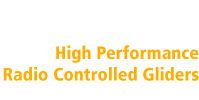
 Overview
Overview
The radio control aircraft that we fly are slope soaring aircraft. They are gliders and have no engines. Hence the lack of noise. The aircraft fly by exploiting a phenomenon called slope lift. This type of lift is explained in the diagram below.
The prevailing wind strikes the slope and as it cannot pass through the slope, it is then forced up and over the hill.
It is in this section of upward moving air that LIFT is produced.
The amount of lift produced is dependant on factors such as the wind speed, direction and the shape of the slope. A wind of 30km/h is sufficient to create an updraught of around 20km/h. This is why slope soaring model aircraft are able to attain height quickly and then dive down, converting their height into speed.
A slope where the wind strikes perpendicular to the slope is ideal, as a side-on wind will greatly reduce the amount of lift produced by the slope. In this situation the air slides along the hill becoming turbulent, rather than up and over it.
The lift area extends quite a long way in front of and above the hill and it is possible to fly many hundreds of metres out in front of, and above the launch point.
Flying
The basic requirements for slope will be a hill with a prevailing wind on the face .This wind will create a lump of rising air directly in front of the hill which may extend quite a distance outwards from its face . The wind will take the shape of a wave which resembles the shape of the hill the higher the hill the better the standing wave of air. We use this standing wave Hence forth known as wave lift to keep our gliders airborne the fact is that the glider is always descending but the wave lift is rising faster than the glider sink rate . Airfoils we use for gliders are to many to mention. But most early trainers will carry a flat bottom Clark Y type of section which are a high lift sections that will preform well in lighter lift.
Where not to fly
For the beginner, search out an experienced flyer for your first outings to ensure that you will be taking home a one piece glider and not the re-kitted version. Make all turns away from the hill in the beginning. Never fly behind you.
Buying your first slope plane
While you may be tempted to get something that is fast, or looks like a jet plane, its best to start with a glider that will allow you to learn. EPP gliders are incredibly tough, and can resist many crashes while you learn. A chevron shaped flying wing, like the Scorpion, is an ideal learners glider. It can fly in a wide range of wind conditions, is stable for beginners, but also can be very aerobatic. There is no reason why your Scorpion flying wing won't last you many years!
What's it all about?
Fun is the main reason we fly slope because it is an enjoyable past time for all. Not only do you get great views but depending on what you fly it can be a most relaxing or physically active day you have ever had .
This has been a very basic introduction to slope flying . There has been many many books written on the subject that will take you deep into the realms of aerodynamic theory but all that can be put to one side once you stand on the hill and throw you latest plane into the wind.
For more information on Slope Soaring, we suggest you visit RC Groups Slope discussion forum. You will find many people throughout the world willing to give you advice and suggestions.




